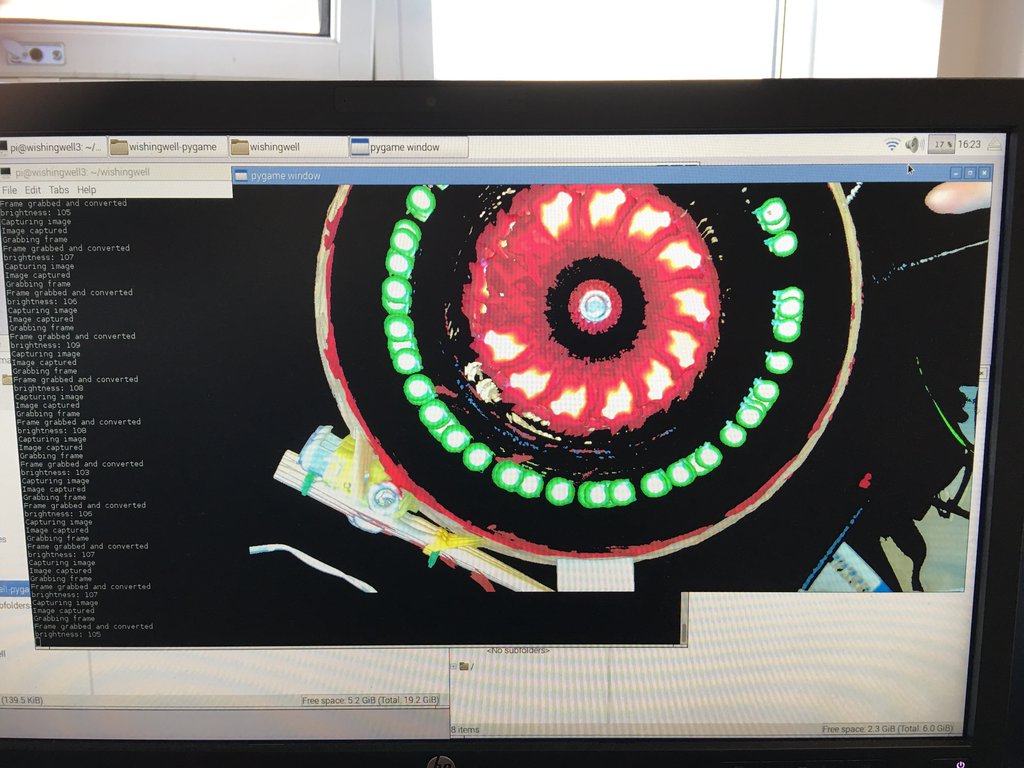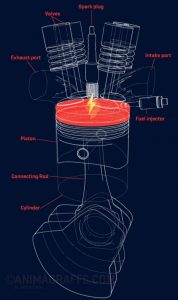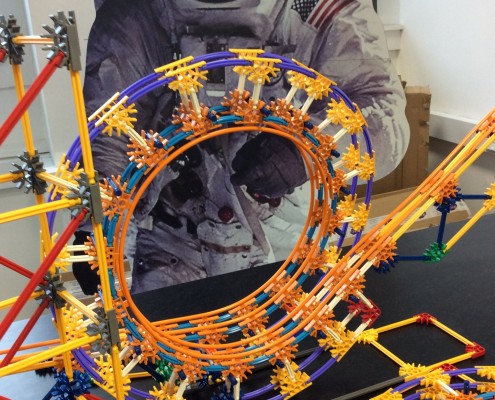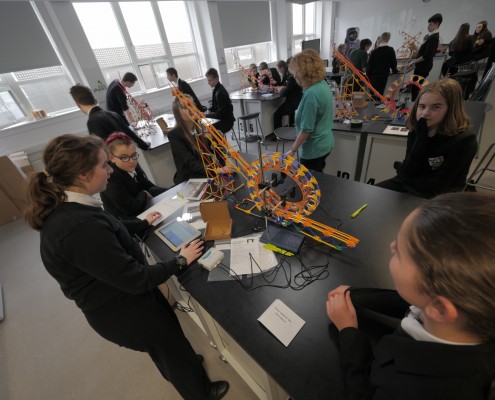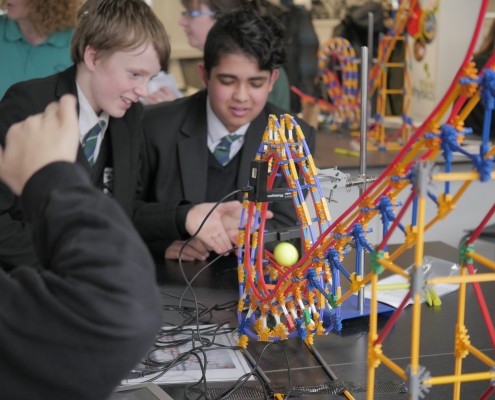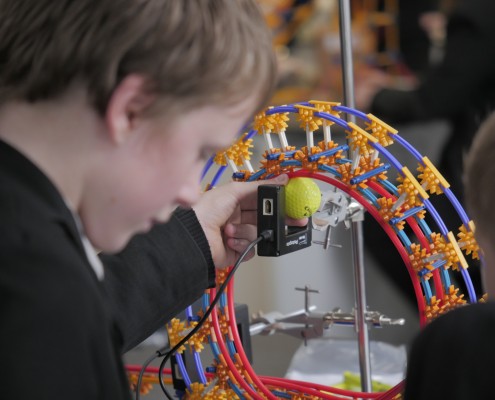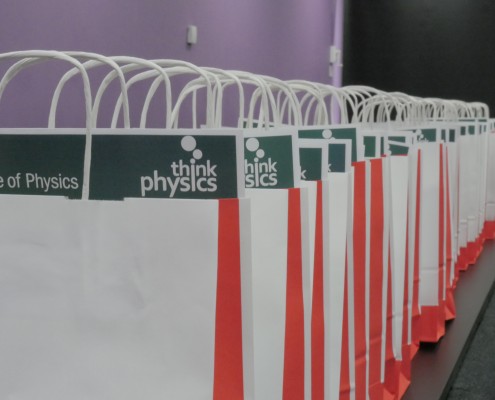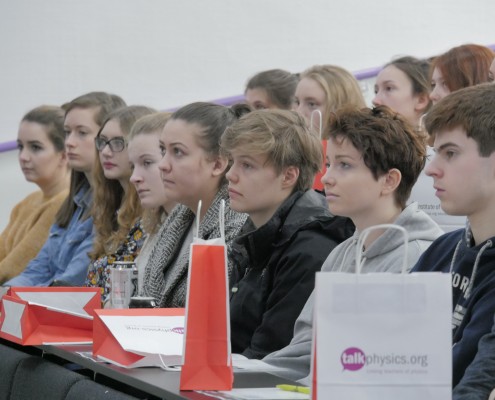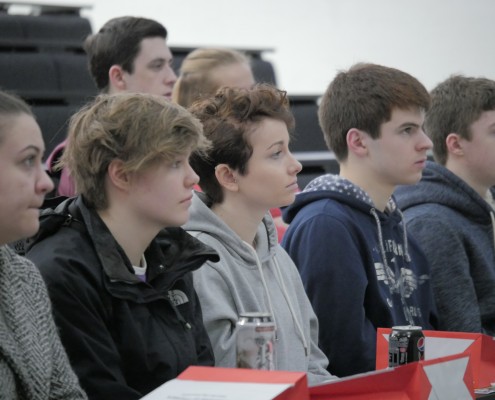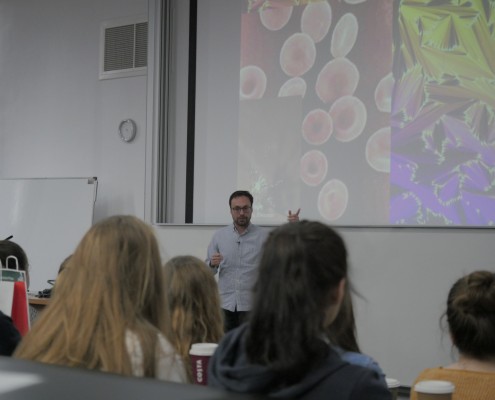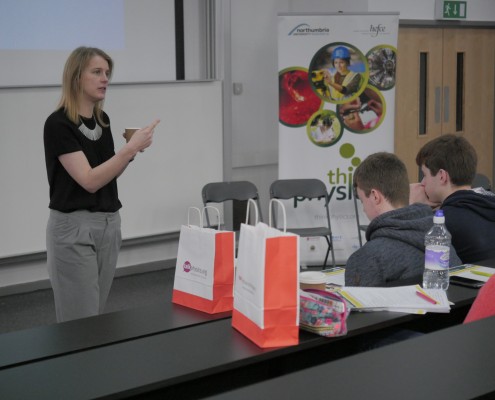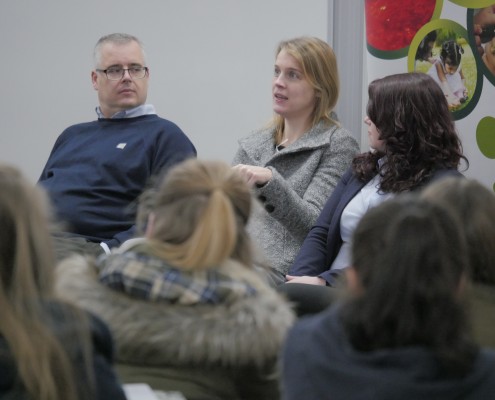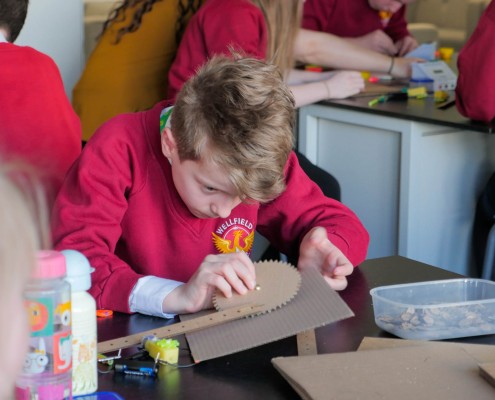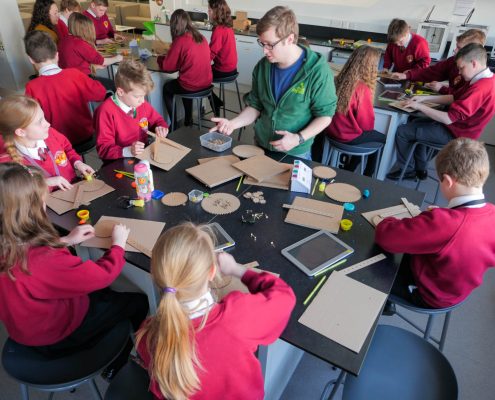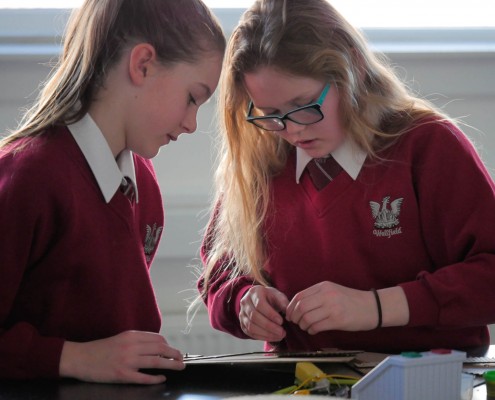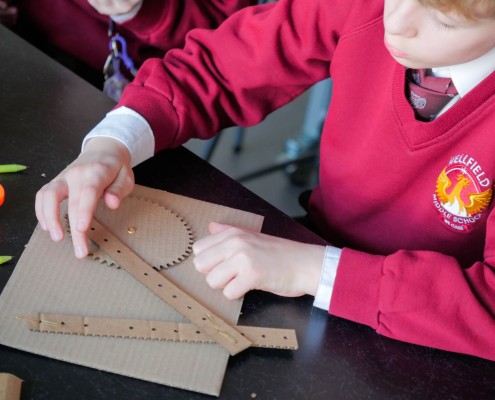At Maker Faire UK last year Think Physics had two stands; a wall of light boxes, and a magnificent harmonic pendulum display which, slightly embarrassingly, I still haven’t written up. Hoping to avoid a similar mistake this time around, I should introduce you to this year’s new installation: the Technology Wishing Well.
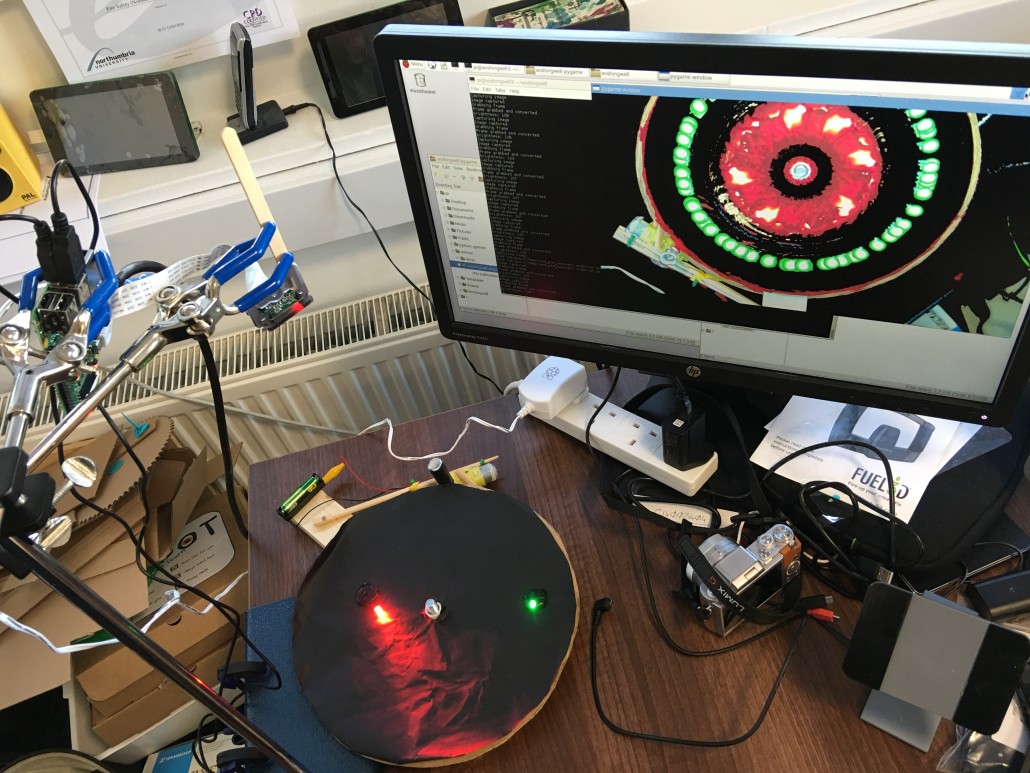
Er… yeah, that’s a bit of a mess. What you’re looking at is a corner of my desk, on which you can see the black disc of a small turntable. That’s part of the light box installation, repurposed shamelessly (hey, I’m allowed to steal from myself, right?). On the turntable are a couple of LED lights. The green one is pointing upwards, the red one fell over and is pointed off to one side.
Left of frame is a retort stand, holding a Raspberry Pi (Pi 3! Woohoo!) and a PiCamera, which as far as I can tell is a mobile phone camera module on the end of a stubby little cable. The Pi is driving the big monitor upper right, and the window in the top corner is showing… what, exactly?
OK, so I’ve written a little Python code which does the following:
- Grabs a picture from the camera.
- Takes all the stuff which is ‘dark’ in that image, and turns it transparent.
- Adds the result to the previous image.
- Repeat.
So, as the turntable turns the green light smears into a ring, and the fallen-over red light smears into a… weird red blobby donut thing. My python code is appallingly slow, but conveniently the result is mesmerising to watch as it gradually builds up. Which is a relief, because we’ve committed to building this thing and there’s no turning back now.
The plan is to build a big one of these, so the current turntables can sit on the big turntable, and then we’ve made a giant light-powered video Spirograph-like-thing. We’re also planning to build little gizmos which move lights around, or change their colour over time, or … well, you’ll have to wait and see. You’ll also be able to make your own lights and toss them onto the turntable disc to add to the artwork as it develops, which is where the whole ‘wishing well’ idea comes in.
There’s lots to do before Maker Faire, but right now I’m just excited (and a little relieved) to see something on a screen rather than in my imagination. This moment’s been a long time coming.
The header image shows the first run of the software – here’s detail of the second, just before the Pi crashed hard. Umm… I should probably look into what caused that.
